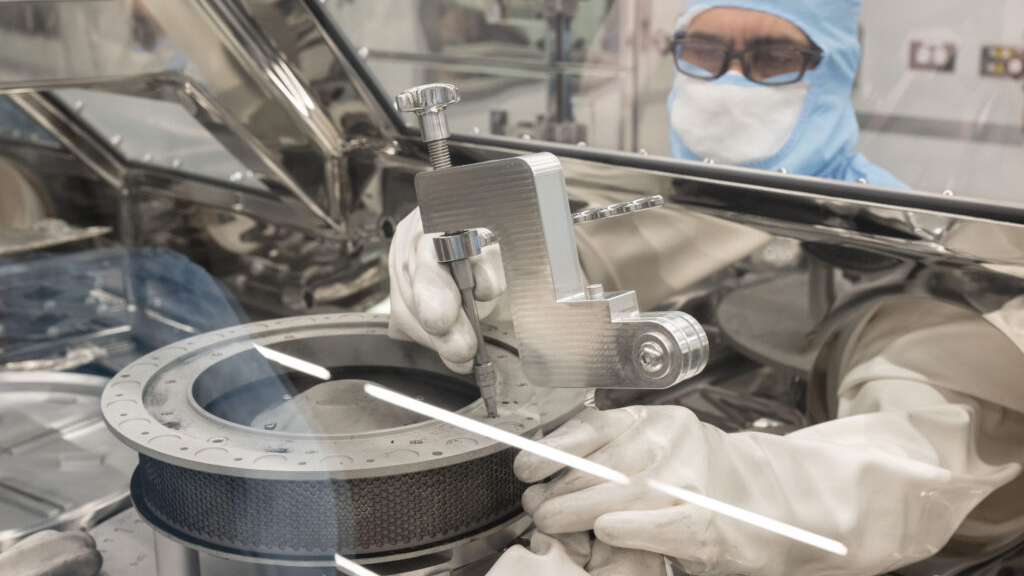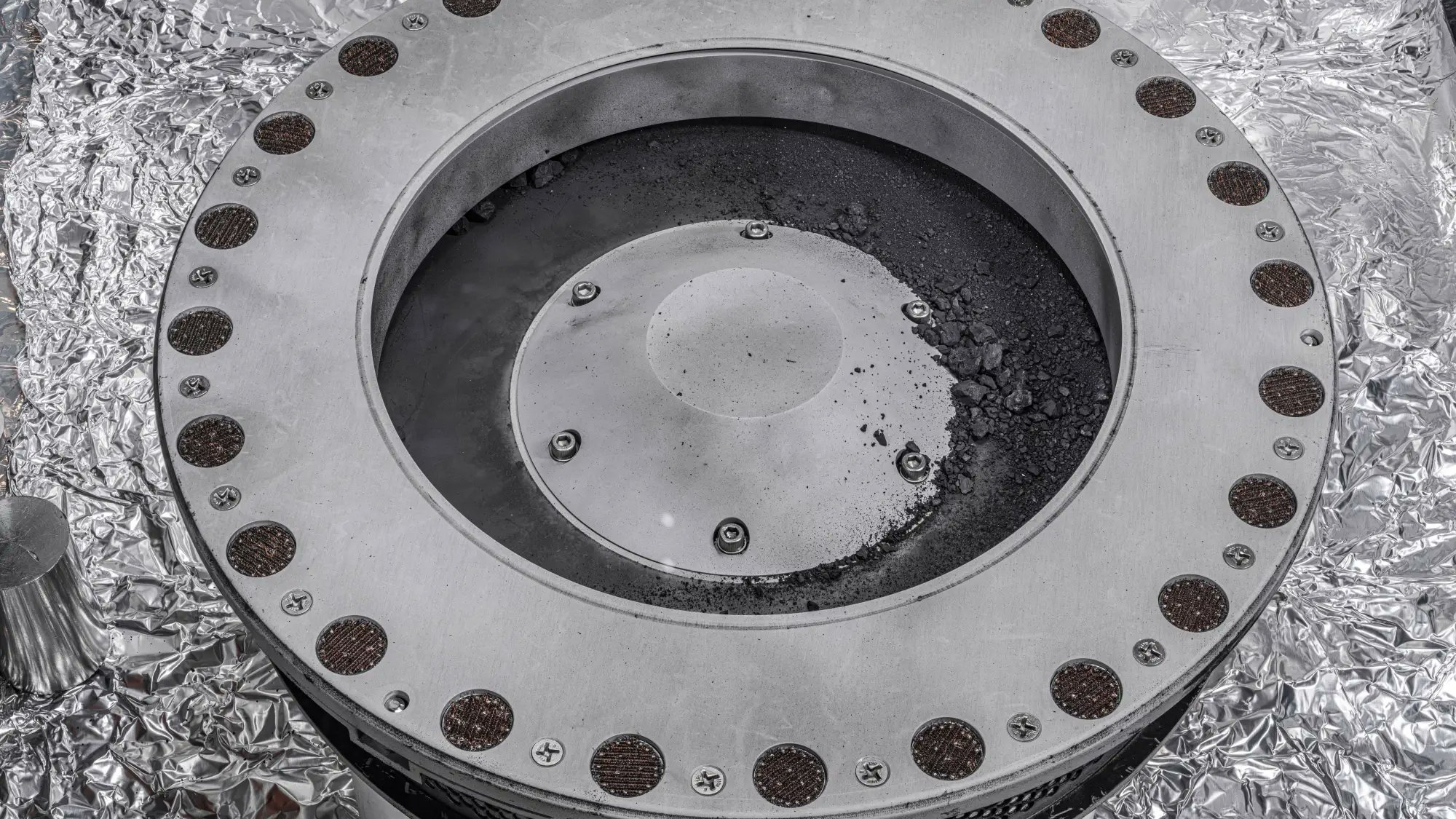At last! NASA finally frees lid of asteroid Bennu sample capsule after battling stuck fasteners
The asteroid samples aboard NASA's OSIRIS-REx landed in September, but 2 stuck fasteners kept them locked tight.

For months, bits of an asteroid collected by a U.S. probe during a billion-mile trek were out of reach to scientists, locked inside a return capsule in a NASA facility with two stuck fasteners preventing access to the rocky space treasure. This week, NASA won its battle against those fasteners.
On Wednesday (Jan. 10), NASA technicians finally removed the stuck fasteners from the sample return capsule of its OSIRIS-REx spacecraft — which completed the first asteroid sample return mission in U.S. history when it landed in Utah in September 2023. Tucked in its capsule were rocks and dust collected from the asteroid Bennu. Initially, the team at NASA's Johnson Space Center in Houston, Texas was able to access 70.3 grams (2.48 ounces) of material — 10 grams more than the mission’s goal — from the outside of the sampler head, called the Touch-and-Go Sample Acquisition Mechanism (TAGSAM).
However, the bulk of the asteroid sample material remained trapped inside the capsule when two of the 35 fasteners on TAGSAM could not be removed with existing tools approved for use inside the OSIRIS-REx glovebox, which ensures the asteroid samples are not contaminated during processing. Thankfully, researchers were able to develop new tools that could tackle the stubborn fasteners, according to a statement from NASA.
Related: NASA's 1st asteroid sample is rich in carbon and water, OSIRIS-REx finds
"Our engineers and scientists have worked tirelessly behind the scenes for months to not only process the more than 70 grams of material we were able to access previously, but also design, develop, and test new tools that allowed us to move past this hurdle," Eileen Stansbery, division chief for ARES (Astromaterials Research and Exploration Science) at NASA, said in the statement. "The innovation and dedication of this team has been remarkable. We are all excited to see the remaining treasure OSIRIS-REx holds."
The team created two new multi-part tools, including custom-fabricated bits made from a specific grade of surgical, non-magnetic stainless steel, which is the hardest metal approved for use in the curation gloveboxes. The tools were tested during removal procedures in a rehearsal lab to ensure they would be able to achieve the torque needed without damaging the TAGSAM head or contaminating the samples, according to the statement.
"In addition to the design challenge of being limited to curation-approved materials to protect the scientific value of the asteroid sample, these new tools also needed to function within the tightly-confined space of the glovebox, limiting their height, weight and potential arc movement," Nicole Lunning, OSIRIS-REx curator at NASA, said in the statement. "The curation team showed impressive resilience and did incredible work to get these stubborn fasteners off the TAGSAM head so we can continue disassembly. We are overjoyed with the success."
Once the team completes the disassembly, they'll be able to weigh the full sample to determine the total mass collected from Bennu. Image specialists will also take ultra-high-resolution pictures of the samples before removing them. NASA plans to distribute a portion of the asteroid samples to the scientific community for further research later this spring.
Breaking space news, the latest updates on rocket launches, skywatching events and more!
Asteroid Bennu is believed to be a primitive space rock that has been roaming space since the early days of our solar system. Therefore, studying samples collected from the surface of the asteroid could reveal new clues about our cosmic neighborhood.

Samantha Mathewson joined Space.com as an intern in the summer of 2016. She received a B.A. in Journalism and Environmental Science at the University of New Haven, in Connecticut. Previously, her work has been published in Nature World News. When not writing or reading about science, Samantha enjoys traveling to new places and taking photos! You can follow her on Twitter @Sam_Ashley13.

